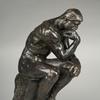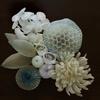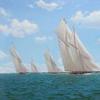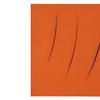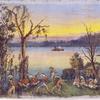A Culture of Independence and Diversity Shown Through Modern Art in 'American Mosaic' Exhibition
- NEWPORT BEACH, California
- /
- November 10, 2016
“Our most enthusiastic purpose will be to reveal the richness of the art created in our United States, to stimulate our native artists and afford them inspiration . . .to show how our American artists maintain their equality with, if not indeed their superiority to, their better known foreign contemporaries.
-Duncan Phillips, 1921
Orange County Museum of Art is now showing American Mosaic: Picturing Modern Art through the Eye of Duncan Phillips, a collection of American art from the late 1800s through the mid 1900s. The exhibition reveals the nature of art during the formation and heyday of modern art in the United States and reflects a culture of independence, diversity, and experimentation. Included are important works by Richard Diebenkorn, Arthur Dove, Thomas Eakins, Helen Frankenthaler, Marsden Hartley, Winslow Homer, Edward Hopper, Georgia O’Keeffe, Horace Pippin, and Clyfford Still. Many of these artworks have never been on view on the West Coast and offer local audiences a rare opportunity to see a large cross-section of The Phillips Collection’s renowned American modernist works on view together. The show provides a thoughtful look into the genius of its visionary founder, Duncan Phillips. The exhibition is on view August 6 - December 4, 2016.
The Phillips Collection, America’s first museum dedicated to modern art, was opened in 1921 in the nation’s capital by Duncan Phillips (1886–1966), who was determined to lift the work of American artists out of obscurity at a time when museums and collectors were primarily interested in European old masters. With an emphasis on the work of living artists, he assembled a collection of American painting when there were no roadmaps for what would stand the test of time. Phillips’s collecting interests were broad-ranging. He promoted diversity—as seen in the works by self-taught artists, artists of color, foreign-born artists, and recently naturalized Americans—resulting in a rich assembly of independent-minded artists. He also believed his collection needed to reflect the continuity of art across time. He reached back into the 19th century to collect artists that he considered America’s first modern masters, particularly Thomas Eakins, Winslow Homer, and Albert Pinkham Ryder, in order to demonstrate the connections between past and present in American modernism.
Phillips dedicated his life to finding, fostering, and celebrating the very best of American art, particularly the work of America’s living artists and especially those guided by their independence and individualism, rather than popular trends. He collected his favorite artists in depth, committed to purchasing “many examples of the work of artists he admired, instead of having one example of each of the standardized celebrities.” He also adopted a practice associated with commercial galleries and unprecedented in the museum setting: Phillips gave living artists solo exhibitions. He believed that these were an important source of encouragement for artists, especially at the beginning of their careers.
American Mosaic: Picturing Modern Art through the Eye of Duncan Phillips, presented in six thematic sections, demonstrates not only the changes in American art from the late nineteenth through the mid-twentieth centuries, it also celebrates Phillips’s lifetime commitment to an extraordinary vision and how this focus created one of the finest collections of American modernism in the country.




